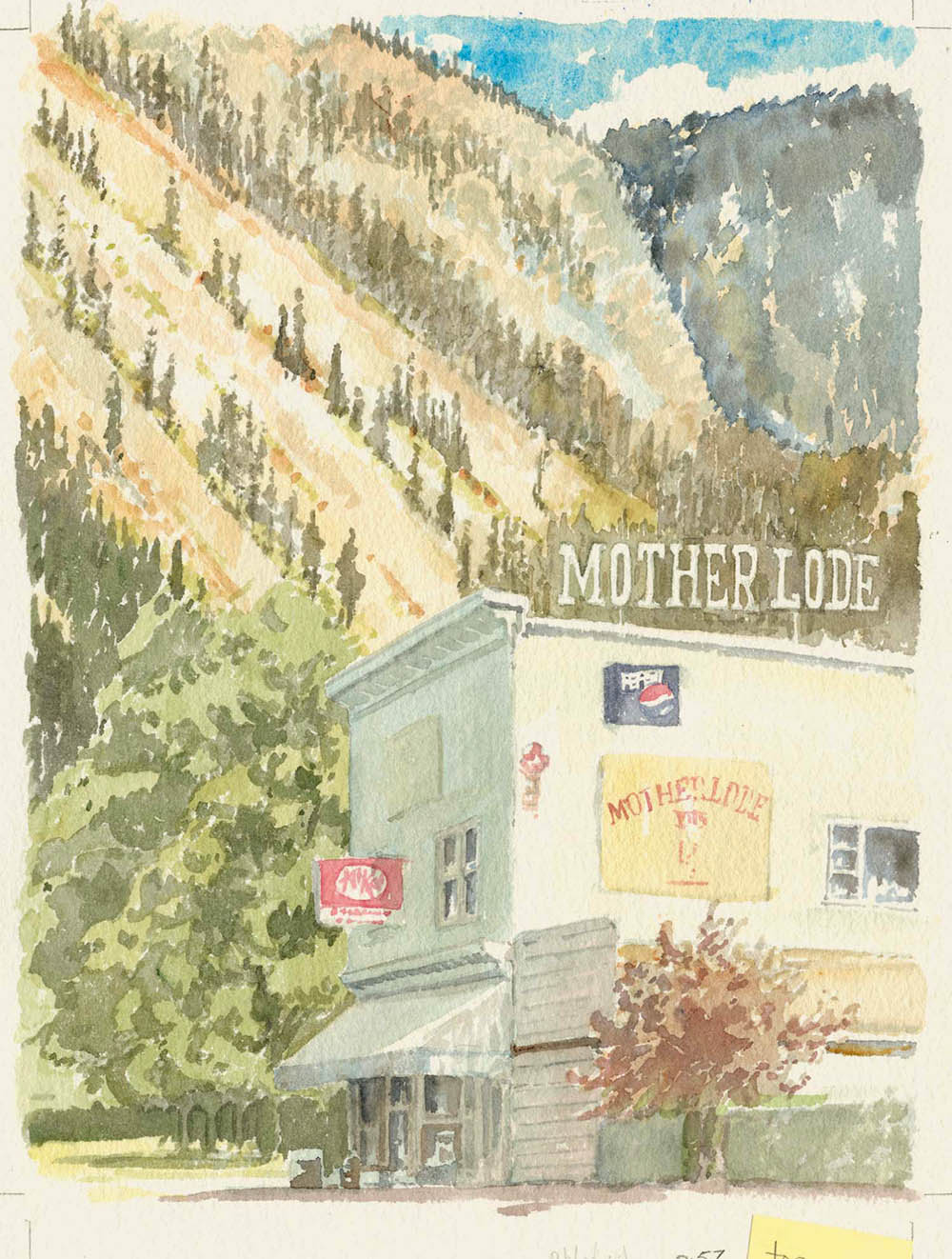
| Written in 2001:
Interior towns are such green oases amongst the browns and blues
of the rugged surrounding countryside. Hedley is/was the great
mining town in the southwestern Interior. Most people pass it by,
acknowledging only the ruined mine works on the steep hillside,
but there is a terrific little town of a few square blocks of
small lots and a main street. Hedley's store, in the watercolour above, is one of the historic buildings to have survived the vagaries of time and the fires of 1956 and 1957. It was likely built soon after the gold strike on Nickel Plate Mountain above the townsite, leading to the building of the Stamp Mill (1904), photo below, and the coming soon after of the GN Railway. Robert Hedley was the manager of the Hall Smelter in Nelson. Nickel Plate gold continued to be mined until 1955. Nearby, on an unclaimed fraction of the mountain, prospector Duncan Woods developed the Mascot Mine, whose ruined buildings perch dramatically on the cliffside above the town. The property is today known as the Barrick Gold (Homestake) Nickel Plate Mine. From Dale Cresswell, 2020: In the late 1970's early 80's I played Jr A hockey for the Merritt Centennials and when we traveled to play in Penticton we would always stop at Hedley and have a meal break. On one of our stops, which usually lasted 30 to 45 minutes, a couple of my team mates decided to hike up to the old mine above Hedley instead of eating. Low and behold the hike took longer than 45 minutes and the rest of the team had to wait until these hikers made their way back to our old converted school bus as the coach and general manager cursed and swore that this was the first and last time anyone ever hiked up to the mine. We arrived in Penticton just in time to run into the old arena, get dressed and onto the ice for our 7 PM start time. As we rode home on our old school bus and were going through Hedley late at night at the back of the bus, out of the coaches hearing, the players that hiked up to the old mine impressed us with stories of the view they had of the valley and of the old artifacts they saw around the old mine. To this day I wish I would have missed a meal and made a hike of a life time as the old mine is now gone and I am in my late 50's. However, I did learn a few curse words from my coach that I had never heard before. From Carmen Reyna, 2015: I was trying to find information on Hedley, BC. My family drove Hwy 3 from Vancouver to Penticton many times during the late 1950's through the 1970's. I remember stopping at Hedley and wandering around the old buildings. I especially remember the saloon. It reminded me of the Long Branch from 'Gunsmoke'. It was very sad to see the buildings collapse each year. I remember saying that it was too bad someone never took interest in the old town and tried to restore it. I think the last time we visited the site was in the late 1960's/early 1970's. We had parked our car just in front of the saloon. As we were leaving and walking down the stairs I heard a rattler and was relieved to get into the car. One year we were very sad to see that none of the old buildings were standing and is was a grass field. Unfortunately my family was not into photography at the time. We found out that my father (the one in charge of the camera) did not realize that you had to focus the camera. As I got older I really enjoyed photography and my sister worked at a photo lab in high school. I would love to have some photos of the old buildings in Hedley. It was a wonderful piece of BC history and holds many good memories of my childhood. If you are aware of any historical books on Hedley that have pictures of the old town I'd really appreciate it if you could let me know. Note from Dororthy Revington, 2008: I'm looking for information on Harold Harrison b. 1887 in Nottingham Eng. emigrated to Canada in 1912. He died at Hedley B.C. in 1967 Nov. 27, where he had been a mechanic. His parents were Henry Harrison and Sarah Ann Sharpe. Would anyone know anything about Harold -- or if he had family there? |
A photograph by an unknown provincial government employee in the 1950s – nearly everything in this scene has disappeared, with only pieces of trellising, foundations and building materials scattered over the hillside
